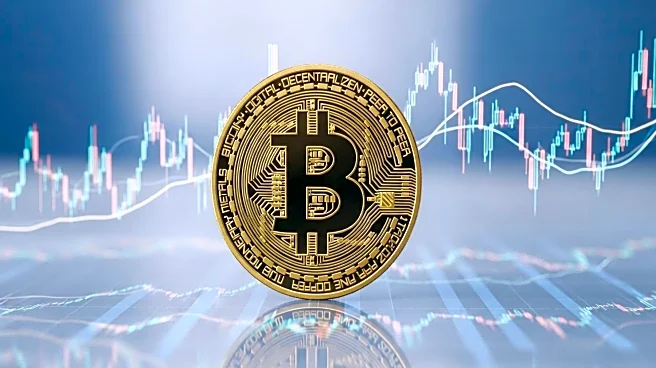What's Happening?
The stablecoin market is undergoing significant changes due to regulatory developments in the U.S. and Hong Kong. The U.S. GENIUS Act, enacted in July 2025, mandates 100% reserve backing for stablecoins with fiat USD or short-duration Treasuries, aligning stablecoin issuance with traditional banking standards. This regulation aims to reduce counterparty risk and enhance investor trust, making stablecoins more attractive for institutional investors. Meanwhile, Hong Kong's Stablecoins Ordinance, effective August 1, 2025, requires issuers to maintain HK$25 million in paid-up capital and fully segregate reserves. This licensing regime is expected to attract major players and establish Hong Kong as a global digital asset hub. These regulations are part of a broader trend towards global standards set by the Financial Stability Board and Basel Committee, ensuring cross-border interoperability for institutional portfolios.
Why It's Important?
These regulatory changes are crucial for the stablecoin market as they provide clarity and reduce compliance costs for institutions. The U.S. GENIUS Act's preference for bank-issued stablecoins has spurred partnerships between traditional financial institutions and fintechs, enabling real-time cross-border payments and tokenized asset settlements. Hong Kong's licensing framework further accelerates this trend by mandating redemption rights and AML/CFT compliance, making stablecoins attractive for institutional custody and asset tokenization. As major banks and asset managers explore tokenized bonds and real estate, stablecoins will serve as the liquidity backbone for these markets. The convergence of regulatory clarity and infrastructure adoption creates a unique window for institutional investors to rebalance portfolios toward stablecoins, offering a hybrid asset class combining the safety of fiat-backed reserves with the programmability of digital assets.
What's Next?
The stablecoin market is projected to grow to $500 billion by 2026, driven by global regulatory clarity and institutional demand for programmable liquidity. As the first batch of licensed issuers emerges in early 2026, investors can selectively allocate capital to tokens with verifiable compliance, reducing exposure to regulatory arbitrage. The strategic entry point for institutional investors lies in leveraging regulatory tailwinds to access high-liquidity, low-risk tokens while capitalizing on cross-border payment innovations. As the U.S., EU, and Hong Kong continue to align their frameworks with global standards, the stablecoin market will evolve from a niche experiment to a core component of modern finance.
Beyond the Headlines
The regulatory developments in the stablecoin market highlight the growing importance of digital assets in the global financial system. By prioritizing stability, transparency, and systemic resilience, these regulations aim to integrate stablecoins into traditional finance, offering new opportunities for portfolio diversification and liquidity management. The focus on bank-issued stablecoins and the alignment with traditional banking standards reflect a shift towards a more secure and regulated digital asset ecosystem. This transformation is expected to drive innovation in payment systems and asset tokenization, paving the way for a more interconnected and efficient global financial infrastructure.











